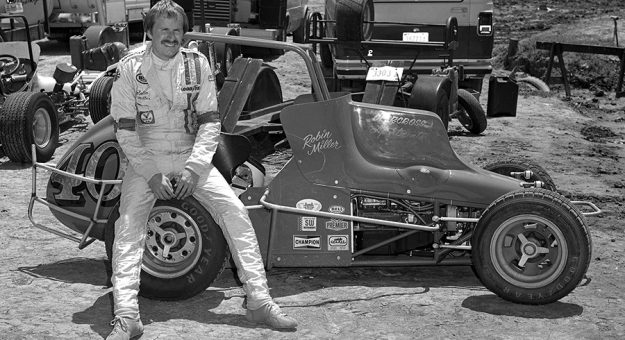MOORESVILLE, N.C. – It was 12 days ago, on Aug. 13, that Robin Miller wrapped up his Motorsports Hall of Fame of America induction ceremony at Indianapolis Motor Speedway with the summation of his incredible life.
“If I don’t get up tomorrow morning, I’ve had a great life,” Miller concluded, his voice choked with emotion.
On Wednesday, Miller did not get up in the morning. He had passed away overnight, shortly after being turned over to Hospice.
An incredible voice has been silenced, but oh, what a life Miller led.
It’s fair to say that in the entire history of Indianapolis Motor Speedway and the Indianapolis 500, there is no other journalist that meant so much for so long to both the speedway and the Indy 500 than Miller. The only other journalist that may have come close was SPEED SPORT’s Chris Economaki.
While Economaki’s prose came on a weekly basis in National Speed Sport News and later on ABC, it was Miller at The Indianapolis Star that covered the speedway and the Indy 500 day-in, day-out beginning in 1968.
That was 11 years after the Southport, Ind., native visited Indianapolis Motor Speedway for the first time in 1957. Two years later, Miller attended his first Indianapolis 500.
Young Miller and his father snuck into the facility through a hole in the fence beyond the backstretch. They would watch the pre-race and the first 40 or 50 laps of the race before listening to the remainder of the 500 on the Indianapolis Motor Speedway Radio Network through the voice of the legendary Sid Collins.
Young Miller was ambitious, and his hero was Jim Hurtubise. When Miller was 18 years old in 1968, he was hired as a “stooge” for Hurtubise’s team.

He didn’t have the job long as Miller accidentally ruined the paint on Hurtubise’s race car.
“I’m 17 years old, stealing beer for a sprint car driver named Jim Hurtubise just so he might remember my face,” Miller recalled. “At 18, he hires me as a stooge, doesn’t pay me, realizes about a week-and-a-half into it I might have been the dumbest person ever around a race car and he has to fire me.
“Free help and I get fired.”
That’s also the first year that Miller’s unlikely journalism career began at The Star. Miller was about to attending Ball State University in nearby Muncie, Ind., but the sports department at The Star saw something in the young Miller that was more important than a college Grade Point Average.
They saw ambition. They saw tenacity and they saw someone who wasn’t intimidated.
What they saw was a newspaperman, and Miller was one of the best in the days when working for a newspaper meant something.
“I was at the right place at the right time, and somebody said, ‘let’s give this poor, 45 IQ moron a chance to do something because obviously he can’t do much,” Miller recalled.
Miller was hired a month after the 1968 Indianapolis 500 and his first duties in the sports department were answering telephones and taking box score information alongside the Jeff Smulyan, later the CEO of Emmis Communications and the owner of the Seattle Mariners, and Bill Benner, who would later go on to become a columnist at The Star.
There was more to Miller than racing. At that time, The Indianapolis Star needed someone to cover the Indiana Pacers of the recently created American Basketball Ass’n. They gave the assignment to Miller when he was 19.
Pacers coach Bobby Leonard liked the kid and the two became lifelong friends. At that time, the Pacers were in the midst of becoming the most successful franchise in ABA history, winners of three ABA titles before the league folded and the Pacers joined the National Basketball Ass’n.
Miller forged close friendships with some of the Pacers’ all-time greats including Mel Daniels, Roger Brown, Bob Netolicky and Billy Shepherd.
For decades, Miller was as well known for his coverage of the Pacers as he was the Indianapolis 500.
But racing was Miller’s true love. In fact, he decided to give it a try for himself as a United States Auto Club midget racer. He bought a Formula Ford from Andy Granatelli in the early 1970s. Two years later, he purchased a midget from Gary Bettenhausen.
Click below to continue reading.
